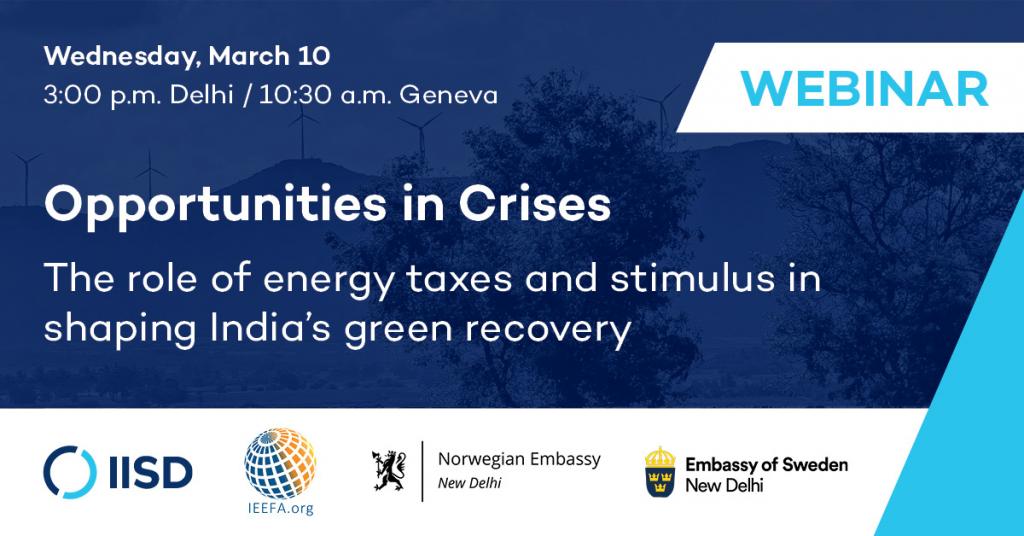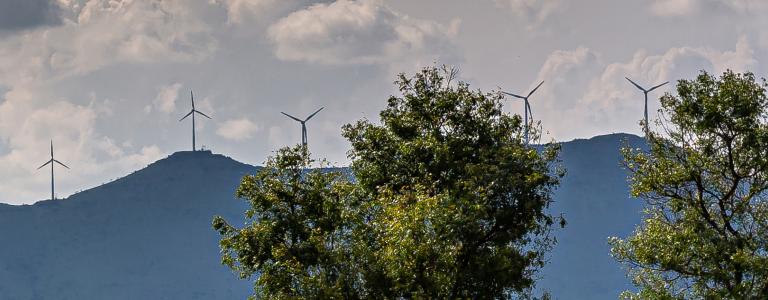Opportunities in Crises: The role of energy taxes and stimulus in shaping India's green recovery

India is a leader among large emerging economies for its innovative use of fossil fuel taxes, such as the coal cess and excise taxes, to raise revenues and foster a clean energy transition. This combination of fossil fuel taxes and support for renewable energy characterizes both the Nordic and Indian approaches to the energy transition.
Nordic countries are internationally recognized for delivering strong economic growth with robust social and environmental policies. Since 2000, the Nordic economies grew 28%, while their carbon dioxide emissions fell by 18%. One of the secrets of their success in balancing these priorities has been the innovative use of energy taxation to recover from an economic crisis, such as the world is facing today.
This webinar, co-organized by IISD, IEEFA, the Royal Norwegian Embassy, New Delhi, and the Embassy of Sweden, New Delhi is unique in bringing together diverse perspectives and specific examples of green fiscal reforms and recovery strategies to inform decision-making by governments and offers valuable insights for researchers and policy experts.
Additional downloads
Upcoming events
Building Bridges: The State of Nature-Based Investments
Join us for a panel at the Building Bridges conference in Geneva, Switzerland, to discuss the state-of-play of nature-based investments and the potential opportunities they present.
Through Her Lens: Women leading change in sustainable agriculture and market inclusion
Despite the critical role that women play in agricultural production, they still do not have equal access to global agricultural supply chains on terms that benefit them.
A Municipal Perspective on the Value of Natural Infrastructure
This webinar will showcase examples the cost-effectiveness of natural infrastructure from a municipal perspective. Focusing on what municipalities need—what evidence and numbers they rely on, and what tools and planning processes are required to ensure that natural infrastructure is assessed alongside traditional infrastructure for cost-effectiveness.

